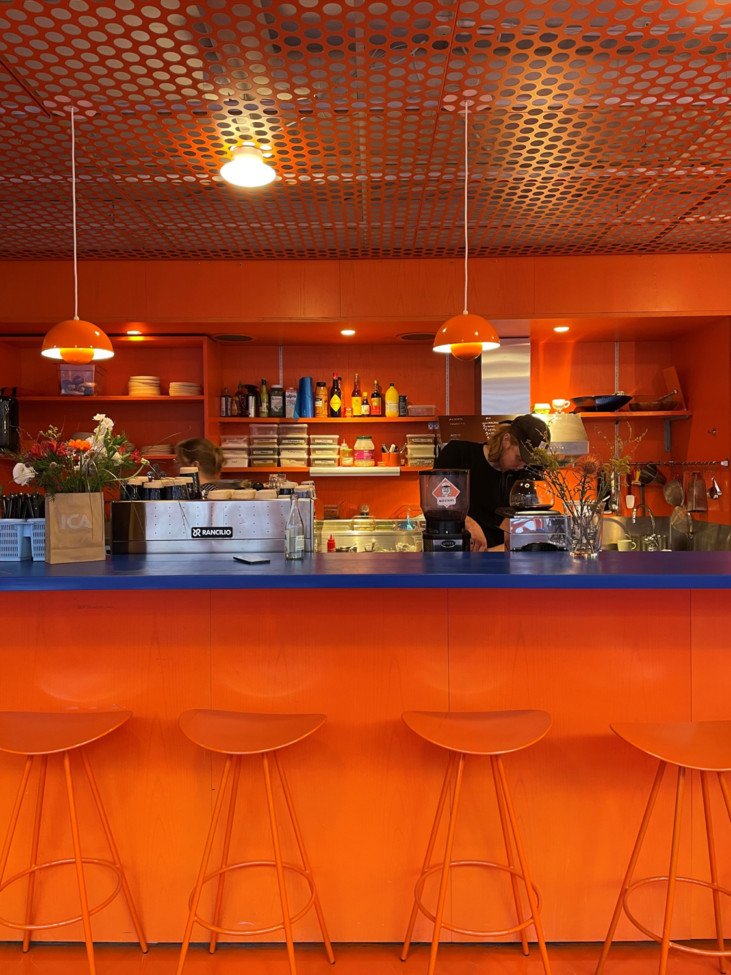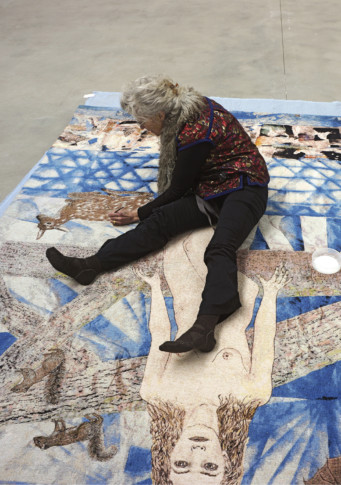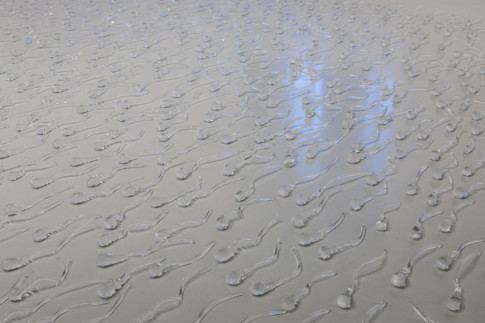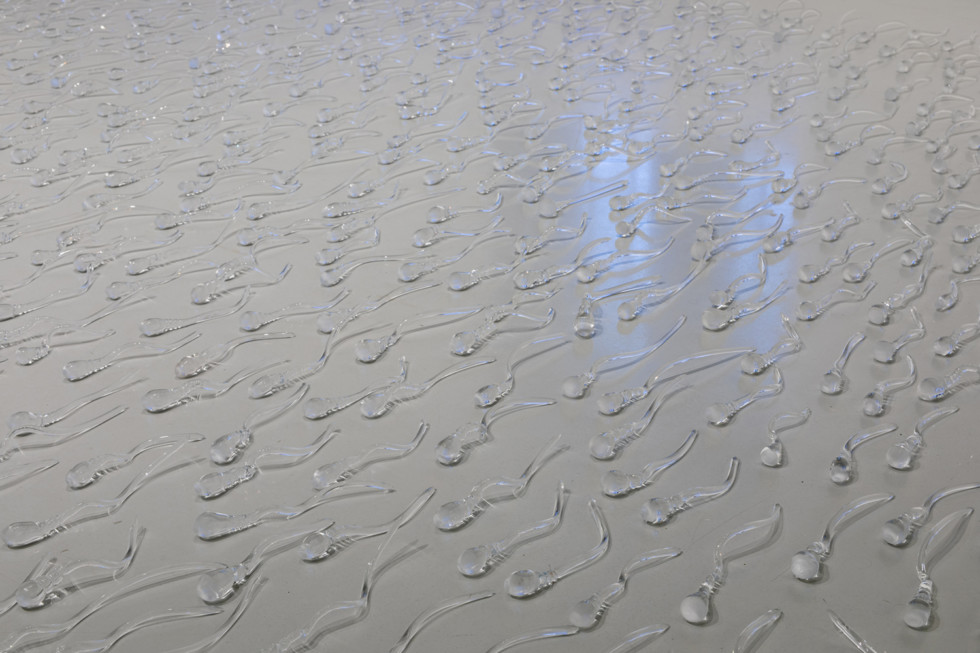
Installation view, Kiki Smith "Woven Worlds" Detail of "Sperm piece", 2025 Photo: Helene Toresdotter/Moderna Museet
Text by Elisabeth Millqvist
We relate to death, we see it happening around us, to people that are close to us, and try to find a way to handle the fact that we know we will not be around forever. But what happened before we entered this world? A tiny speck. Just a dot. Laurie Anderson’s words presents us to a similar, vast void.
Kiki Smith made this prequel to being born into a work in her Sperm piece from 1991. It is a glittering glass work spread out on the floor, a shoal made up of more than 700 parts. The work in the Moderna Museet collection was made in a time when the HIV virus spread like an epidemic, many people contracted AIDS and died a premature death. Kiki Smith lost a sister and many friends to AIDS. Although effective HIV treatment is available today, the disease continues to claim lives in many parts of the world. Certain works and artists are strongly connected to this time in history. Félix González-Torres made works that celebrated love and lovers, while the artist and filmmaker Derek Jarman created a famous garden shortly after being diagnosed HIV positive, “tending an abundance of life in the face of death,” as the writer Olivia Laing put it. The art collector Fredrik Roos, who turned the electricity plant where Moderna Museet Malmö is located into a museum in 1988, passed away from the disease three years after the opening of the museum. Andres Serrano caused an outcry with his photograph in 1987 of a crucifix immersed in urine. In the early years of the AIDS epidemic, the danger was very real and the body became a threat.
Kiki Smith has long been interested in our bodily interior, but Sperm piece also represents her commitment to the female body and the rights of women to decide over their own bodies. The body is our primary vehicle, Smith states, and in recent years her attention has shifted outwards, to the natural world around us. Flora and fauna—furry owls, ragged wolves, and eagles with impressive wing spans—are depicted on the large tapestries that are in the focus of this exhibition. The work is inspired by the medieval Apocalypse Tapestry, but the concern is here and now.

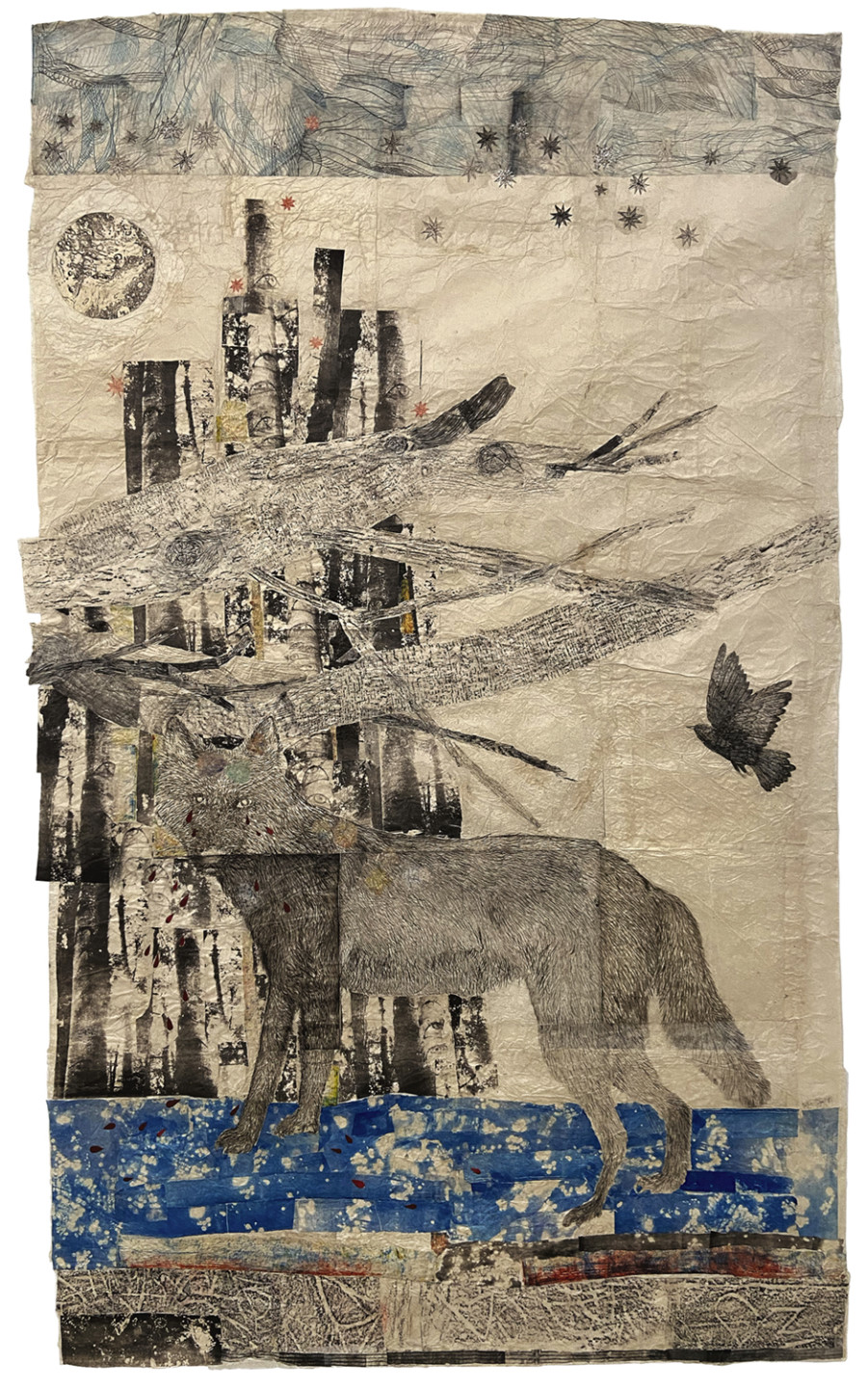
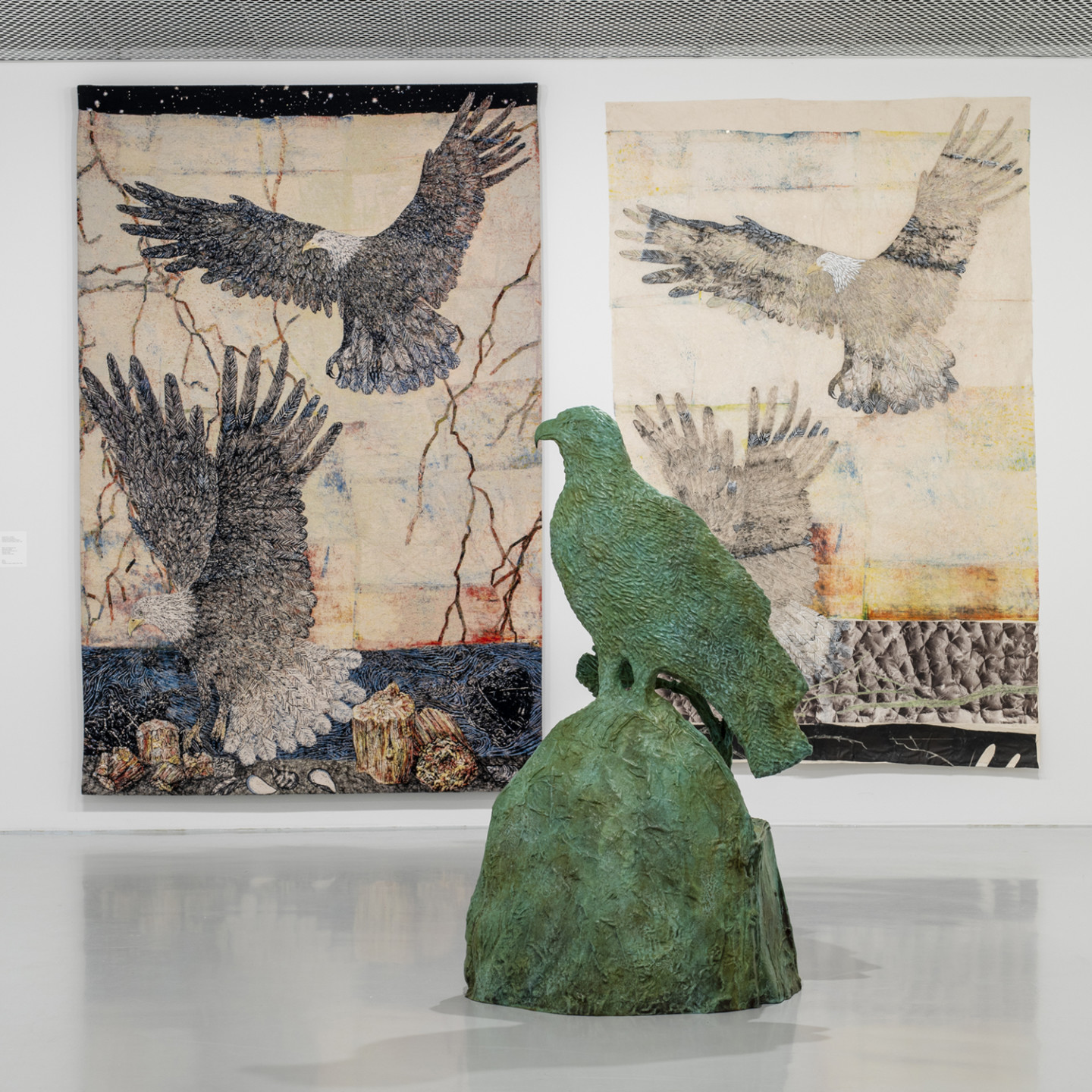
Inward and outward is not a dichotomy; Smith’s worldview is a cosmic totality. It is a challenge of today and tomorrow to raise awareness of nature and animals, and to take action to prevent extinction of species when many people no longer have a relationship with the natural world. Nature—plants, trees, and bees—are not so familiar anymore, and we do not know how to handle the wild and unfamiliar, whether to protect, eradicate, or exploit it, inevitably bringing to mind that after more than 100 years, there is once again an established wolf territory in Southern Sweden. We fear the wolves and carefully monitor how many individuals make up a sustainable population as well as what size of pack is a threat. Man-made roads cross and cut off natural habitats, leaving patches of land for wildlife in precarious conditions.
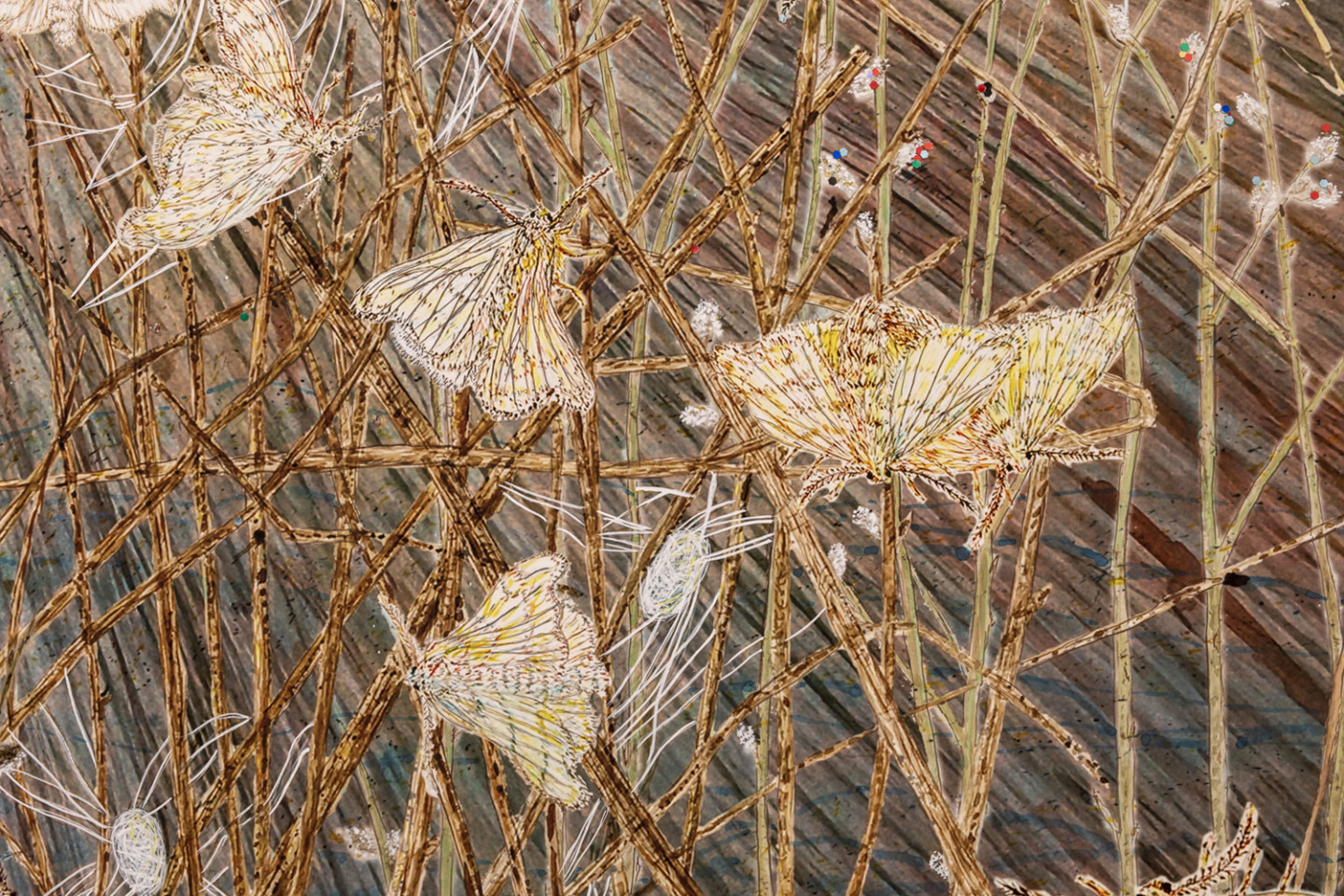
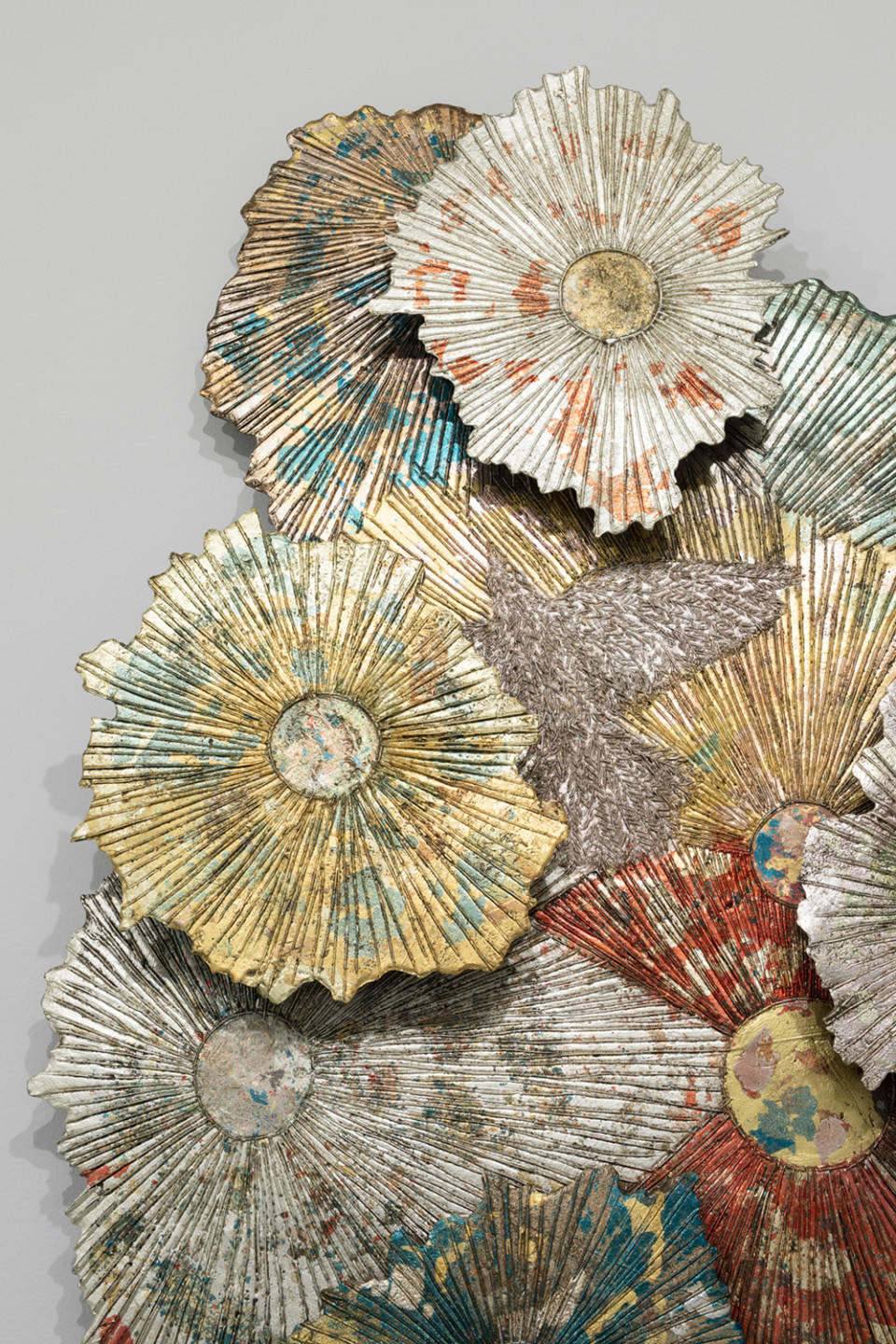
What does it mean to imagine the sewing needle as a dangerous tool and to envision female collective textile making as a process that might upend conventions, threaten state structures, or wreak political havoc?
Kiki Smith looks long and close, she makes us stay with the image imbedded with time through the Jacquard weave. Her animals are realistic but not descriptive figures in a fauna, they derive from images from fairy tales and myths. In the exhibition, we get to follow her process through materials that leads up to the tapestries. Her work provides us with knowledge from other sources. The enchanting images are far from harmless, they lean on traditions that provide strategies for an alternative. The art historian Louise Bryan-Wilson asks: “What does it mean to imagine the sewing needle as a dangerous tool and to envision female collective textile making as a process that might upend conventions, threaten state structures, or wreak political havoc?” While Smith explores the historical links of tapestry and drawing inspired by historical needle work, she invites us to pay attention to nature, in the artist’s words: a miracle to behold.
It is a great pleasure to be able to share the artist’s work with new and old generations. Moderna Museet Malmö wishes to thank the artist, Dr. Julia Wallner Director of the Arp Museum, the curator and colleagues at the museum for the thoughtfulness and creativity that went into making the exhibition and their commitment to collaborate and make it travel. A warm thank is also due to Museum of Contemporary Art of Montenegro and Director Vladislav Šćepanović for rewarding partnership. The dedication to this project is a tribute to the inspiring artistry of Kiki Smith.
Elisabeth Millqvist, Director Moderna Museet Malmö and Curator
Kiki Smith
“Woven Worlds” includes over 50 artworks by Kiki Smith, featuring both jacquard weavings and their originals, detailed drawings up to …
Woven Worlds
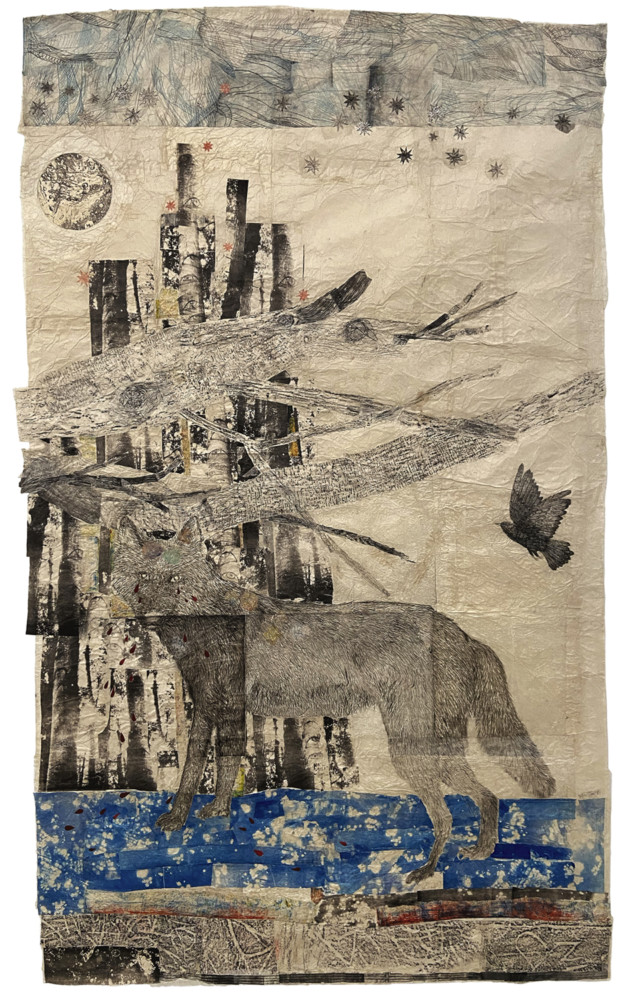
Book a guided tour
Book a guided tour for your students, friends, colleagues or club. Experience an inspiring and dynamic environment, discover new perspectives and new …
Book a guided tour
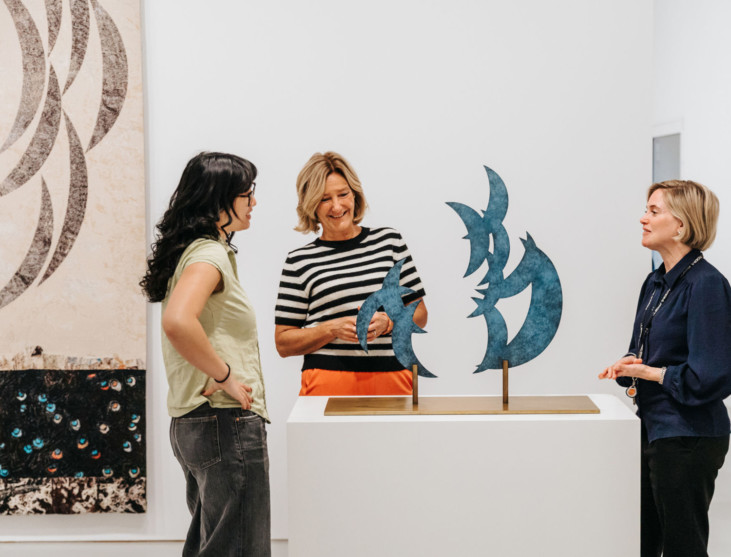
Kafé Sisko
To have a snack and eat and drink something delicious in connection with the museum visit is unbeatable! Sit down in our café, Kafé Sisko, to …
Kafé Sisko
